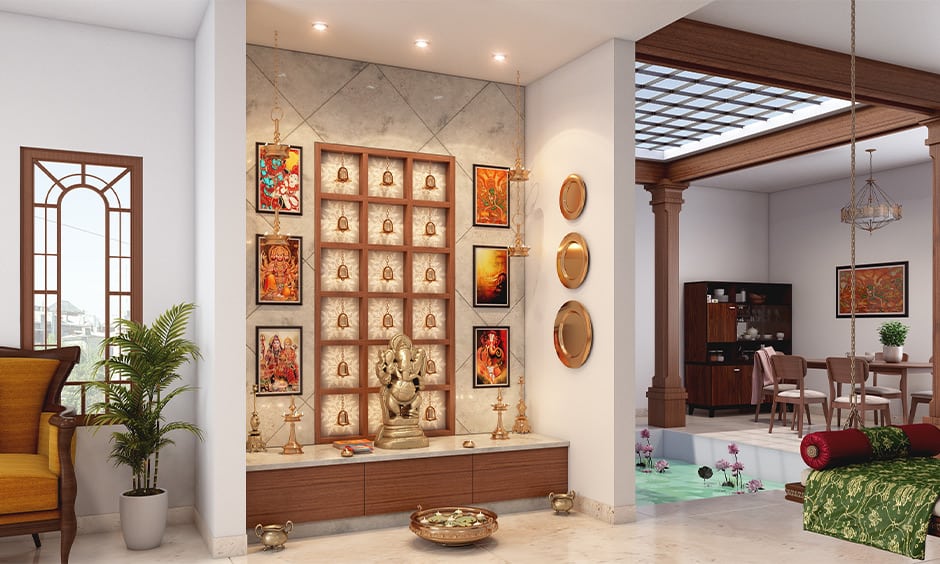In the realm of ancient Indian architecture and design, Vastu Shastra holds a special place, guiding individuals to create harmonious and balanced living spaces. One crucial aspect of Vastu is the design and placement of a Pooja Room, a sacred space where individuals connect with their spirituality. In this blog, we will explore the auspicious requirements of Vastu for Pooja Room to ensure a tranquil and positive environment for your spiritual practices.
Location and Direction:
The first step in adhering to Vastu for Pooja Room is selecting an appropriate location within your home. According to Vastu principles, the northeast corner is considered the most auspicious for the Pooja Room. This direction is believed to harness positive energy and facilitate a strong connection with the divine. Ensure that the Pooja Room is not placed in the bedroom, as the energy associated with sleep may clash with the spiritual vibrations intended for this sacred space.
Design and Construction:
The construction and design of the Pooja Room play a vital role in channelling positive energy. The room should preferably be square or rectangular in shape to align with Vastu principles. Avoid irregular shapes or extensions that may disrupt the flow of energy. While designing the Pooja Room, prioritise simplicity and avoid unnecessary ornamentation. Opt for calming and soothing colours like white, light yellow, or light blue to enhance the spiritual ambience.
Altar Placement:
The heart of the Pooja Room is the altar, and its placement is crucial for maintaining positive vibrations. The altar should be in the northeast or east direction, and the idols or images of deities should face west or east. Avoid placing the idols facing south, as it is believed to invite negative energies. Ensure that the idols are positioned at least an inch away from the wall to allow the flow of positive energy.
Materials and Decor:
Choosing the right materials and decor elements is essential when implementing Vastu for Pooja Room. Opt for materials like wood, marble, or metal for the construction of the altar. Avoid materials like glass, as they are believed to disrupt the flow of positive energy. Use simple and clean designs for the decor, and incorporate soft lighting to create a serene atmosphere. Keep the Pooja Room well-ventilated to allow fresh energy to circulate.
Storage and Organisation:
Maintaining cleanliness and order in the Pooja Room is a fundamental aspect of Vastu. Ensure that the space is clutter-free, as a tidy environment encourages positive energy flow. Install adequate storage for keeping the Pooja essentials organized. Avoid storing unrelated items in the Pooja Room, as they may introduce negative energies. Regularly clean and dust the space to maintain its sanctity.
Direction of Worship:
While performing rituals and prayers, it is essential to adhere to the recommended direction of worship according to Vastu for Pooja Room. Facing east or north during prayers is considered auspicious, as these directions are believed to be conduits for positive energy. Ensure that the person conducting the rituals sits facing one of these directions to align with the natural flow of energy.
Incorporating Sacred Symbols:
Enhance the spiritual energy of the Pooja Room by incorporating sacred symbols and yantras. The auspicious ‘Om’ symbol, Swastika, and other divine symbols can be placed in the Pooja Room to attract positive vibrations. These symbols are believed to amplify spiritual energy and create a conducive atmosphere for meditation and prayer.
Conclusion:
Implementing Vastu for Pooja Room is a thoughtful way to create a sacred and harmonious space within your home. By paying attention to the location, design, and elements within the Pooja Room, you can invite positive energy and foster a deeper connection with the divine. Remember, the key lies in simplicity, cleanliness, and adherence to Vastu principles. May your Pooja Room become a sanctuary for spiritual growth and tranquillity.


